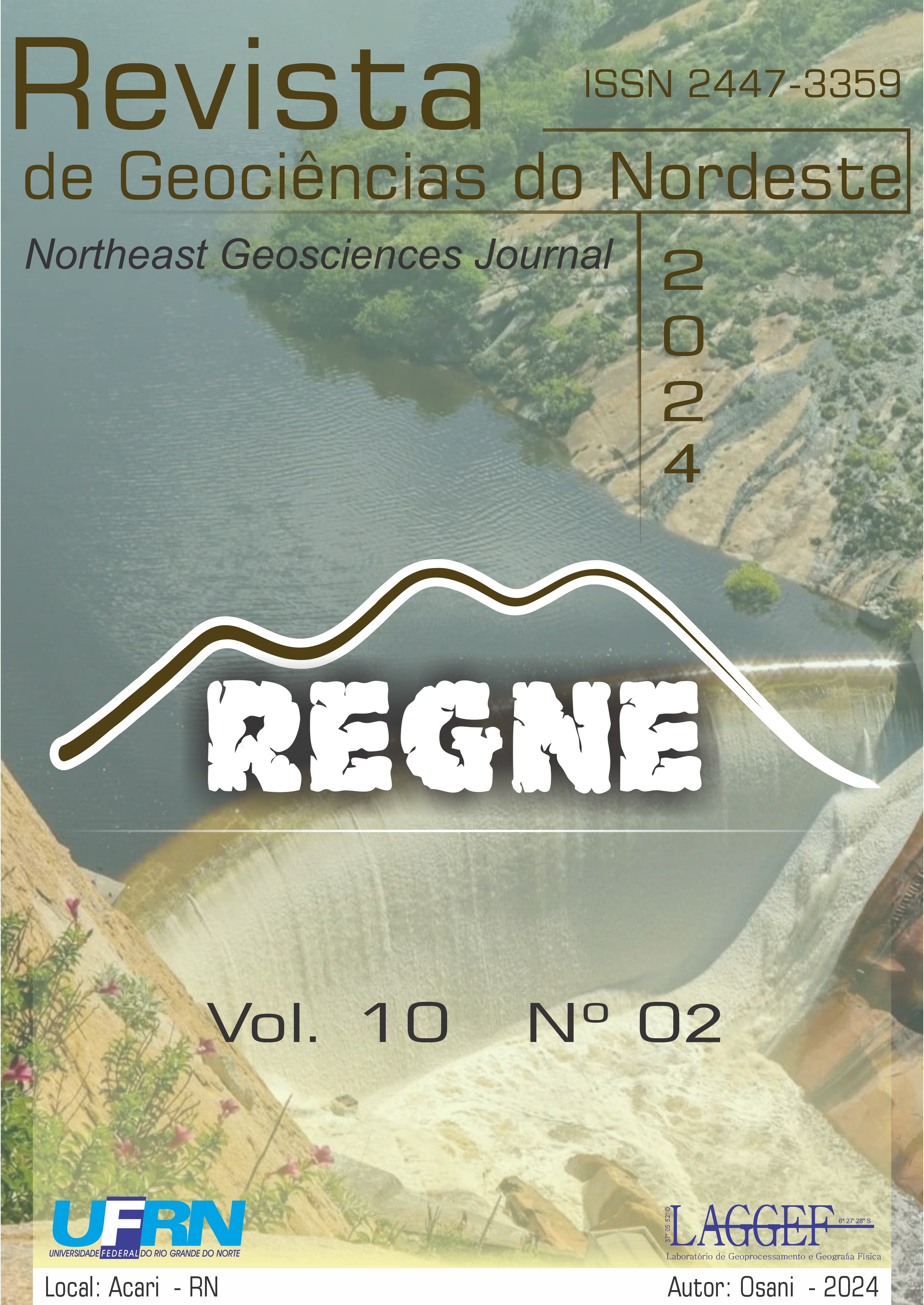Evaluation of positional quality of point clouds obtained by Terrestrial Laser Scanner (TLS)
Evaluation of positional quality of point clouds obtained by Terrestrial Laser Scanner (TLS)
DOI:
https://doi.org/10.21680/2447-3359.2024v10n2ID36353Abstract
3D TLS (Terrestrial Laser Scanner) surveys rapidly provide thousands of points of the mapped area and reduces the surveying operational costs. Several companies use TLS point clouds as a reference for other surveys, although the positional accuracy of this product has not been evaluated as fully reliable. This study aimed to evaluate the positional quality of point clouds generated by Terrestrial Laser Scanner (TLS) according to Decree No. 89.817 (Brasil, 1984), in addition to ET-CQDG (CONCAR, 2011; DCT/DSG, 2016). For this purpose, control points collected with GNSS receivers by RTK surveying were used for the evaluation. The number of control points was defined by the isolated lot method with sampling procedure, according to DCT/DSG (2016). To evaluate the spatial distribution of points, the Ripley K-Function was used. For trend analysis, the directional mean of the discrepancy vectors, together with circular variance was used. The results for this study show that TLS points cloud is compatible by considering the planimetric precision and planimetric accuracy to the scale of 1: 280 for flat areas, being classified as class A (CAS-DCS, Cartographic Accuracy Standard-Digital Cartographic Standard) for planimetry, according to Brazilian standards of positional accuracy, showing no trends in the coordinates.
Downloads
Downloads
Published
How to Cite
Issue
Section
License
Copyright (c) 2024 Notheast Geoscience Journal

This work is licensed under a Creative Commons Attribution 4.0 International License.


 Português (Brasil)
Português (Brasil) English
English







